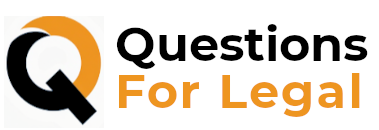In the bustling world of commerce, where brands strive for recognition and consumer loyalty, trademarks stand as indispensable assets for businesses of all sizes. Understanding the nuances of trademark registration is crucial for protecting intellectual property and maintaining a competitive edge.
At its core, a trademark is a symbol, word, phrase, or design that identifies and distinguishes the source of goods or services. It serves as a unique emblem representing the quality, trust, and reputation associated with a particular brand. Trademarks go beyond mere corporate insignias; they embody the essence of a company, fostering consumer trust and loyalty. Whether it’s the iconic swoosh of Nike or the golden arches of McDonald’s, trademarks are the visual and auditory cues that make brands memorable in the minds of consumers.
Table of Contents
- The Basics of Trademark Registration
- Unregistered Trademarks
- Circumstances Where Unregistered Trademarks Can Be Useful
- Challenges and Considerations
- Strategies for Maximizing the Value of Unregistered Trademarks
- Final Thoughts
The Basics of Trademark Registration
The journey to trademark registration begins with a thorough understanding of the application process. While specific details may vary across jurisdictions, the general framework involves a series of steps designed to evaluate the uniqueness and eligibility of the proposed trademark. These steps typically include conducting a comprehensive trademark search to ensure there are no conflicting marks, preparing and filing the application with the relevant intellectual property office, and responding to any inquiries or objections that may arise during the examination process.
Navigating the intricacies of the application process demands meticulous attention to detail and a strategic approach to overcome potential obstacles. A successfully registered trademark, however, opens a gateway to an array of benefits that extend beyond the mere act of claiming a symbol or phrase.
Benefits of Registering a Trademark
Legal Protection
Perhaps the most compelling reason to embark on the journey of trademark registration is the robust legal protection it affords. Once registered, a trademark provides its owner with exclusive rights to use the mark in connection with specific goods or services. This exclusivity acts as a shield, deterring others from using confusingly similar marks and offering the trademark owner the legal grounds to enforce their rights in the event of infringement.
Exclusive Rights
Registered trademarks bestow upon their owners a level of exclusivity that is unparalleled. The owner has the sole right to use the trademark in the marketplace, preventing competitors from capitalizing on the established goodwill and reputation associated with the mark. This exclusivity not only safeguards the investment made in building a brand but also bolsters consumer confidence by ensuring the consistency and quality of goods or services.
National and International Recognition
One of the pivotal advantages of trademark registration is the attainment of broader recognition, both nationally and internationally. A registered trademark enjoys a presumption of validity and ownership, making it easier to assert rights and defend against potential challenges. Moreover, for businesses with aspirations beyond national borders, a registered trademark can be a passport to international markets, providing a foundation for protection in foreign jurisdictions through treaties and agreements.
Unregistered Trademarks
Unregistered trademarks, also known as common law trademarks, derive their status and protection from the actual use of the mark in commerce. Unlike their registered counterparts, they do not undergo a formal application process with an intellectual property office. Instead, their existence and rights emanate from the inherent association consumers make between the mark and the goods or services it represents. This informal yet powerful recognition forms the foundation of unregistered trademarks.
Common characteristics of unregistered trademarks include their adaptability, flexibility, and responsiveness to market changes. Unburdened by the procedural constraints of registration, these trademarks can evolve organically in response to shifting consumer preferences and industry trends.
Common Law Protection
Rights Based on Use
The primary source of protection for unregistered trademarks is the concept of common law rights. Simply put, the rights associated with an unregistered mark are grounded in its actual use in the marketplace. The longer a business uses a particular mark and the more widespread its use becomes, the stronger the common law rights it can claim. This places a premium on consistent and continuous use as a means of solidifying and expanding the scope of protection.
Geographic Limitations
While unregistered trademarks offer protection, it is important to note that this protection is not unlimited. Common law rights are inherently tied to the geographic areas where the mark is used and recognized. As a result, a business with an unregistered trademark might find its protection confined to specific regions where it has established a presence. This geographical limitation underscores the importance of strategic expansion and the potential need to register a trademark for broader protection.
Limitations and Risks
Lack of Nationwide Protection
One of the key limitations of unregistered trademarks is the absence of nationwide protection. Unlike registered trademarks, which enjoy exclusive rights across the entire country, unregistered trademarks are limited to the areas where they are actively used and recognized. This can pose challenges for businesses with aspirations of national reach, requiring careful consideration of the potential gaps in protection.
Difficulty in Enforcement
Enforcing the rights associated with unregistered trademarks can be a challenging endeavor. Without the formal documentation and legal presumption that come with registration, proving the existence and scope of common law rights may require more substantial evidence. This difficulty in enforcement underscores the importance of proactive measures, such as documenting use and policing unauthorized uses, to bolster the strength of common law protection.
Circumstances Where Unregistered Trademarks Can Be Useful
Unregistered trademarks, also known as common law trademarks, derive their status and protection from the actual use of the mark in commerce. Unlike their registered counterparts, they do not undergo a formal application process with an intellectual property office. Instead, their existence and rights emanate from the inherent association consumers make between the mark and the goods or services it represents. This informal yet powerful recognition forms the foundation of unregistered trademarks.
Common characteristics of unregistered trademarks include their adaptability, flexibility, and responsiveness to market changes. Unburdened by the procedural constraints of registration, these trademarks can evolve organically in response to shifting consumer preferences and industry trends.
Common Law Protection
Rights Based on Use
The primary source of protection for unregistered trademarks is the concept of common law rights. Simply put, the rights associated with an unregistered mark are grounded in its actual use in the marketplace. The longer a business uses a particular mark and the more widespread its use becomes, the stronger the common law rights it can claim. This places a premium on consistent and continuous use as a means of solidifying and expanding the scope of protection.
Geographic Limitations
While unregistered trademarks offer protection, it is important to note that this protection is not unlimited. Common law rights are inherently tied to the geographic areas where the mark is used and recognized. As a result, a business with an unregistered trademark might find its protection confined to specific regions where it has established a presence. This geographical limitation underscores the importance of strategic expansion and the potential need to register a trademark for broader protection.
Limitations and Risks
Lack of Nationwide Protection
One of the key limitations of unregistered trademarks is the absence of nationwide protection. Unlike registered trademarks, which enjoy exclusive rights across the entire country, unregistered trademarks are limited to the areas where they are actively used and recognized. This can pose challenges for businesses with aspirations of national reach, requiring careful consideration of the potential gaps in protection.
Difficulty in Enforcement
Enforcing the rights associated with unregistered trademarks can be a challenging endeavor. Without the formal documentation and legal presumption that come with registration, proving the existence and scope of common law rights may require more substantial evidence. This difficulty in enforcement underscores the importance of proactive measures, such as documenting use and policing unauthorized uses, to bolster the strength of common law protection.
Challenges and Considerations
One of the foremost challenges in the realm of trademarks is the potential for conflicts with existing marks. In the absence of a comprehensive search and clearance process, businesses adopting unregistered trademarks may inadvertently tread on the territory of established brands. Such conflicts can result in legal disputes, damage to reputation, and costly rebranding efforts. Thorough due diligence, including comprehensive trademark searches, becomes imperative to minimize the risk of conflicts and ensure a smooth path for brand development.
Difficulty in Enforcing Rights
Enforcing the rights associated with unregistered trademarks presents a notable challenge. Unlike their registered counterparts, unregistered trademarks lack the inherent legal presumptions and formal documentation that simplify enforcement. Proving the existence and scope of common law rights may require substantial evidence and resources. This difficulty underscores the importance of proactive measures, including consistent use, documentation, and vigilance against potential infringements. Businesses relying on unregistered trademarks must be prepared for the realities of enforcement and consider strategic alternatives to mitigate risks.
Building and Maintaining Goodwill
Building and maintaining goodwill—the intangible asset representing consumer trust and loyalty—is a perpetual challenge in the world of trademarks. Unregistered trademarks, while capable of fostering goodwill through use and recognition, may face hurdles in consistently conveying a unified brand image. The informal nature of common law protection necessitates vigilant brand management to ensure that goodwill is not diluted or compromised over time. Businesses must invest in strategic branding efforts, quality products or services, and effective marketing to solidify their brand reputation and maximize the benefits of unregistered trademarks.
Strategies for Maximizing the Value of Unregistered Trademarks
Strong Branding and Marketing
- Distinctive Branding: Unregistered trademarks heavily rely on the strength of branding to establish a unique identity in the market. Businesses should invest in creating distinctive logos, taglines, and other brand elements that resonate with their target audience. A memorable and compelling brand image not only enhances consumer recognition but also contributes to the overall value of the unregistered trademark.
- Consistent Messaging: Consistency is key in building brand equity for unregistered trademarks. Maintaining a cohesive and uniform brand message across all touchpoints reinforces the association between the mark and the quality or characteristics of the products or services. This consistency fosters trust and loyalty among consumers.
- Strategic Marketing Campaigns: Proactive marketing efforts play a crucial role in maximizing the value of unregistered trademarks. Businesses should implement strategic marketing campaigns that highlight the unique selling propositions of their products or services, reinforcing the connection between the brand and positive consumer experiences. Leveraging social media, digital advertising, and other channels can amplify the reach and impact of these campaigns.
Monitoring and Addressing Infringements Promptly
- Vigilant Monitoring: Businesses with unregistered trademarks should establish a robust monitoring system to track potential infringements. This involves keeping an eye on competitors, industry developments, and new market entrants. Regular monitoring helps identify unauthorized use of similar marks early on, allowing for timely action.
- Swift Enforcement: Promptly addressing infringements is critical to maintaining the integrity of unregistered trademarks. Businesses should have a well-defined enforcement strategy, including sending cease and desist letters and, if necessary, pursuing legal action. Timely and decisive responses deter would-be infringers and protect the value built around the brand.
- Public Communication: In cases of infringement, businesses can leverage public communication channels to assert their rights and communicate the unauthorized use of their unregistered trademark. Transparent communication with consumers and stakeholders reinforces the legitimacy of the brand and may garner support in the marketplace.
Transitioning to Registered Trademarks as Resources Allow
- Resource Allocation: While unregistered trademarks offer flexibility and immediate protection, businesses should strategically plan for the transition to registered trademarks as resources allow. Allocating resources for trademark registration becomes an investment in long-term protection, providing broader and more secure rights.
- Assessment of Business Growth: As businesses grow and expand their market presence, the need for nationwide and international protection becomes increasingly important. Regular assessments of business growth and market reach can inform decisions on when to transition to registered trademarks to align with evolving strategic goals.
- Phased Registration: Recognizing budget constraints, businesses can opt for phased registration by prioritizing key trademarks or core products. This allows for a gradual transition to registered status, aligning with financial capacities while ensuring the most critical aspects of the brand are formally protected.
Final Thoughts
In the ever-evolving landscape of business, the value of unregistered trademarks lies in their ability to offer a swift and adaptable path to brand protection. For businesses operating in local or niche markets, with limited resources, or engaged in experimental branding, unregistered trademarks can be invaluable assets.
Their value, however, is not absolute but contextual. The dynamic nature of markets, industry trends, and business goals means that the efficacy of unregistered trademarks may vary from one context to another. What remains constant is the need for businesses to approach trademark protection with a strategic mindset, leveraging the strengths of unregistered trademarks while mitigating their inherent risks.

An accomplished defense lawyer who, after hours of navigating the complexities of the legal system, enjoys spending free time honing his marksmanship skills at the shooting range.





